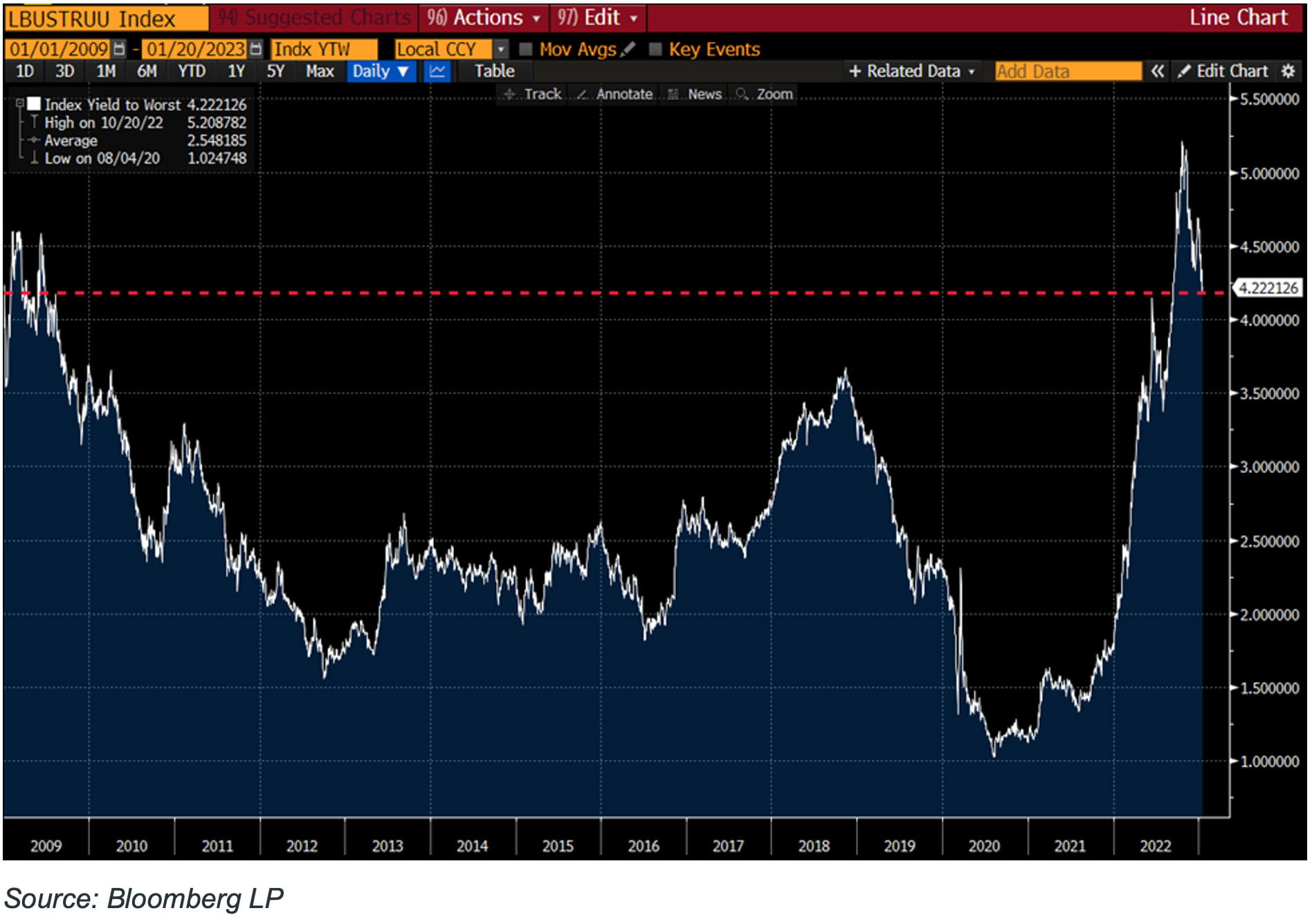Investing with a flat yield curve
Drew O’Neil discusses fixed income market conditions and offers insight for bond investors.
A “normal” yield curve is positively sloped, meaning that yields get progressively higher as maturities increase. This provides investors an incentive to extend out into longer maturities by offering higher yields the further one moves out on the curve. Currently, the shape of most yield curves is not “normal.” The Treasury curve is inverted, meaning that short-term yields are higher than longer-term yield. More importantly to investors, the corporate bond yield curve is also slightly inverted (essentially flat) and the municipal curve is flat out to ~10 years, where it then begins to steepen.
Buying bonds when the yield curve is flat is understandably perplexing to many investors. The gut reaction for many investors is to simply purchase very short maturity bonds. The thinking goes that if you can earn the same yield in a 1-year bond as you can in a 10-year bond, why take on the additional duration risk? There are several reasons why, which I will discuss below. For illustrative purposes, I will assume a perfectly flat yield curve at 5%, meaning all bonds, no matter what the maturity have a yield to maturity of 5%.
The first thing to remember is that yields are quoted on an annualized basis. This means that if you purchase a 10-year bond at a 5% yield, you aren’t earning 5% total, you are earning 5% every year for 10 years. To put it in dollar terms, a $1,000,000 investment into a 1-year bond yielding 5% will earn $50,000. The same investment in a 10-year bond will earn $500,000.
The second is reinvestment risk. Let’s say you purchase the 1-year bond. One year from now your bond has matured and you have to reinvest the cash. If 1-year yields are still 5%, will you be happy with that and reinvest into another 1-year bond? If so, then what about the next year? Will you reinvest in another 1-year bond at 5%? And so on and so on… If you will continually be happy earning 5% annually, you just keep the reinvestment going. That is exactly what purchasing a 10-year bond yielding 5% does for you: it will earn you 5% annually for 10 years. The major difference is that in purchasing the 10-year bond now, you lock in that 5% annual yield for 10 years. If you choose to keep reinvesting 1-year bonds, you have to hope that yields aren’t lower a year from now, or a year after that, and so on. You only locked in your yield for 1 year, so a year from now you have to take what you can get in the market, which may very well be a lower yield.
To provide another perspective on the idea of locking in attractive yields when you can, think about taking out a mortgage. If rates are near their lowest levels in recent memory, you wouldn’t want to take out a mortgage with a rate that resets every year. When rates are low, it makes sense to lock in the low rate for a long period of time. Just like you want to lock in a low borrowing rate when you can, if you are lending money, you want to lock in high rates. That is exactly what purchasing bonds is: lending money to some entity (like a corporation, a municipality, or the US government). So as a lender, locking in attractive yields for a longer period of time likely makes sense depending on your investment time horizon.
So how should you be investing in the face of a flat or inverted yield curve? Every investor’s situation is unique, so there is no one-size-fits-all solution. Yet, for many investors with a longer-term time horizon, locking in the attractive yields that are currently available might make sense. The graph below shows the average yield of the Bloomberg US Aggregate Index since 2009. While yields are off their highs from a few months ago, they are still at levels not seen in over a decade and are ~175 basis points higher than their average since 2009. While no one can say for certain what the future of interest rates will be, there is the chance that we won’t return to these yield levels again for another decade or more. Locking in yields with longer maturity bonds right now might make sense and could prove to be a winning strategy for many investors.
The author of this material is a Trader in the Fixed Income Department of Raymond James & Associates (RJA), and is not an Analyst. Any opinions expressed may differ from opinions expressed by other departments of RJA, including our Equity Research Department, and are subject to change without notice. The data and information contained herein was obtained from sources considered to be reliable, but RJA does not guarantee its accuracy and/or completeness. Neither the information nor any opinions expressed constitute a solicitation for the purchase or sale of any security referred to herein. This material may include analysis of sectors, securities and/or derivatives that RJA may have positions, long or short, held proprietarily. RJA or its affiliates may execute transactions which may not be consistent with the report’s conclusions. RJA may also have performed investment banking services for the issuers of such securities. Investors should discuss the risks inherent in bonds with their Raymond James Financial Advisor. Risks include, but are not limited to, changes in interest rates, liquidity, credit quality, volatility, and duration. Past performance is no assurance of future results.
Investment products are: not deposits, not FDIC/NCUA insured, not insured by any government agency, not bank guaranteed, subject to risk and may lose value.
To learn more about the risks and rewards of investing in fixed income, access the Financial Industry Regulatory Authority’s website at finra.org/investors/learn-to-invest/types-investments/bonds and the Municipal Securities Rulemaking Board’s (MSRB) Electronic Municipal Market Access System (EMMA) at emma.msrb.org.


